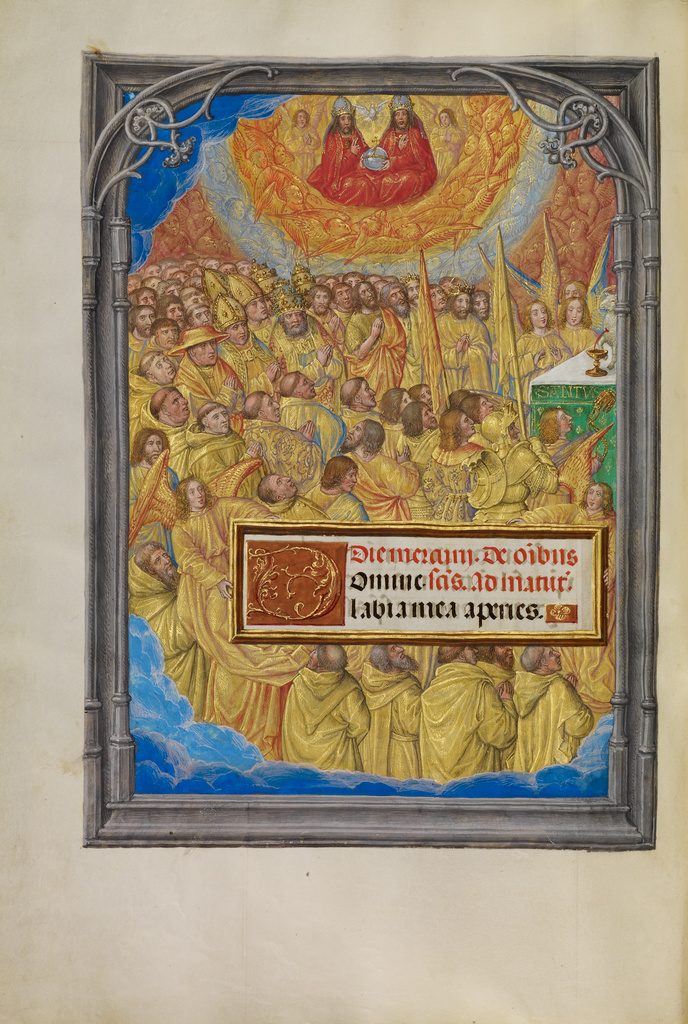The Peace of God was a medieval religious movement that aimed to keep the constantly warring nobles of Europe in check.1 The Peace of God movement originated in France during the 10th century, but as time went on, it grew to encompass most of Western Europe. The movement began as a result of the constant infighting between nobles and “independent warlords.”2 The rulers in Western France lacked enough power to police the nobles properly. Because of this, the nobles and their armies could more or less do whatever they wanted, including attacking whomever or wherever they wanted. As one can imagine, this did not bode well for those who lacked their own personal army to defend themselves.3

The beginnings of the Peace of God movement lay in Peace assemblies, which were religious gatherings usually held in open fields. At these assemblies, the relics of saints would be displayed, and crowds of believers would come both to see the relics and to try to witness any miracles that may be caused by the relics. The local nobles and religious authorities would then publicly state laws regulating the soldiers’ actions, in order to prevent harm to non-combatants during battles. The soldiers would then publicly swear to abide by the laws.4 In a way, the Peace assemblies bear a resemblance to the American Temperance movement rallies of the late 1800s.
Under the Peace of God, combatants were prohibited from causing injury to members of the clergy, prohibited from attacking religiously “consecrated places,” such as monasteries and churches, and prohibited from fighting on Sundays and feast days.5 As the Catholic Church was a major political power in medieval Europe, and Catholicism was an important part of the lives of many people, the aforementioned checks on the nobility were religious in nature. Those who violated the Peace of God were punished with excommunication, meaning that they would no longer be considered part of the Christian community.6
Related to the Peace of God movement was the Truce of God. The Truce of God expanded on the Peace of God by restricting when fighting could occur.7 Under the Council of Toulouges of 1027, fighting was prohibited from Saturday evening to Monday morning.8 Later, the prohibited days were expanded to include Thursday, Friday, Saturday, and holy days during the week.9
One of the events that led to the decline of the Peace of God and Truce of God was the Council of Clermont in 1096, where Pope Urban II proclaimed “peace among Christians,” which, combined with the start of the Crusades a few years later, caused the nobles to battle a common enemy in the form of Islam instead of each other.10
- Richard Landes, “Peace of God: Pax Dei,” Center for Millennial Studies at Boston University. http://www.mille.org/people/rlpages/paxdei.html, (accessed August 28, 2016). ↵
- Landes, “Peace of God: Pax Dei.” ↵
- Landes, “Peace of God: Pax Dei.” ↵
- Landes, “Peace of God: Pax Dei.” ↵
- The Catholic Encyclopedia, 1912, s.v. “Truce of God,” by Charles Moeller. ↵
- Landes, “Peace of God: Pax Dei.” ↵
- H. E. J. Cowdrey, “The Peace and the Truce of God in the Eleventh Century,” Past and Present, no. 46 (February 1970): 44. ↵
- Cowdrey, “The Peace and the Truce of God in the Eleventh Century,” p. 44. ↵
- The Catholic Encyclopedia, 1912, s.v. “Truce of God,” by Charles Moeller. ↵
- Landes, “Peace of God: Pax Dei.” ↵



28 comments
Carlos Serna
I did not know that something would exist like the Peace of God and the Truce of God. I believe that this is all contradictory to Christian beliefs because they are allowing war. The only thing it prohibits is for people to kill brothers of the clergy. It is for me difficult to believe that the Pope would just let people to kill between them and allowed it.
Meadow Arriaga
Although they refer to themselves as the peace of god, they are not so peaceful. This article is interesting because it perfectly describes how strict people were with religion. During Europe medieval times, I can imagine people rarely missing church and being devoted to their religion. It seems the relics had a great amount of control over all these people.
Hali Garcia
This is a very informative article! I have never heard of the Peace of God or Truce of God movements so I learned a lot from this article. It is always interesting to learn more about how much power the Church had and how they would influence the people. What struck me was how they brought the relics and would regulate the people’s behavior to prevent attacks. Another thing that I thought was interesting was certain days that they could not fight.
Kelsey Sanchez
This article was interesting because it was called the peace of God and the truce of God but in reality didn’t sound so peaceful. There was mostly conflict involved and you can see why. The Christians were known as having power among people and that this shocking due to church and state being together. This article was very informative and was interesting to read as it involved not much of peace, but rather conflict. I was also amazed by how they had days where they couldn’t fight.
Samantha Bonillas
What stood out to me in this articles is how they would display the relics of saints and try to witness miracles. The Peace of God might not have been so peaceful at the name makes them to be, but the display of relics shows, in my opinion, that this group was Catholic based. Throughout the time of the Peace of God, the Christian church had a lot of power among the people. Church and State were together during this time period, which is why the Peace of God was not so peaceful. This article was well written and informative.
Michael Hinojosa
I find it ironic that the group calls them Peace of God when they aren’t exactly the most peaceful group around in my own opinion. It’s stories like this that make me realize why we call this period of time the Dark Ages of human history. I know that some churches in the past used to be corrupt since they had pretty much all of the power but this seems a bit excessive and downright toxic if you ask me.
Matthew Swaykus
Medieval Europe was a brutal, gothic, and inglorious time in human history. We often refer to this time as the dark ages with very good reason. After the western half of Rome had been ravaged and despoiled by the invading Goths and Huns, there was little from keeping the rulers of this vast land from inhumanely slaughtering one another to satiate their own avarice. The article points this out by showing how religion and codes were basically the only power keeping the medieval political landscape in check.
William Rittenhouse
For a group called the Peace of God they don’t sound so peaceful. I know the church had issues with abuses of power during the medival ages. The crusades is what kind of brought christians together to help fight for a noble cause. There were a few different popes during this time that were very corrupt and did some terrible things. I know church and state were connected during the medival ages which is why there were so many problems.
Roman Olivera
It is kind of crazy to think that the Catholic Church had that much power to be able to set up the place that war could take place and restrict the days that war could happen. The Peace of God and The Truce of God are great ideas though. This is a concept that keeps non combatants safe and out of harms way while the people who are trained for war can fight. This is also the way the military still works today where you are not supposed to strike the enemies non-combatants or medical trained solders or sailors. The enemies of America just doesn’t care about these concepts so it really never works.
Honoka Sasahara
It was so informative article for me because I have never heard about those movements. I think that it is great that there were movements which protect people from fighting. Sometimes it’s hard to stop fighting without any rules or something. The Peace of God and Truce of God movement must have contributed to peaceful lives of people.